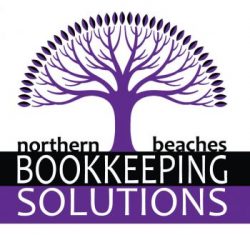Managing Payroll for Remote Workers – What You Need to Know
As remote work becomes increasingly common, small businesses in Australia must adapt their payroll processes to accommodate remote employees. From tracking work hours to managing tax and superannuation obligations, effective payroll management is essential for maintaining financial control and ensuring compliance. Here’s everything you need to know about managing payroll for remote workers.
Why Payroll for Remote Workers Is Different
Managing payroll for remote workers presents unique challenges, including:
- Tracking Work Hours: Remote workers may have flexible schedules, making it crucial to implement accurate time-tracking systems.
- Tax Obligations: Payroll tax and income tax obligations may vary depending on the employee’s location.
- Superannuation Compliance: Ensuring correct super contributions, especially for contractors and casual employees.
- Payment Methods: Remote workers may prefer online payments, direct deposits, or payment platforms.
How to Effectively Manage Payroll for Remote Workers
1. Implement Time Tracking Software
Accurate time tracking is essential for paying remote workers accurately. Consider using software like Xero Projects, Clockify, or Deputy to track hours worked, overtime, and leave entitlements. Ensure that all hours are recorded and verified before processing payroll.
2. Establish Clear Payment Terms
Remote workers may operate under different contract terms (e.g., hourly, daily, or project-based rates). Clearly outline payment terms in the employment contract, including:
- Hourly or fixed rates
- Payment schedule (weekly, biweekly, monthly)
- Overtime rates and conditions
- Reimbursement for work-related expenses
3. Ensure Accurate Payroll Tax Withholding
Payroll tax obligations for remote workers are determined by their location and employment status. For Australian employees, withhold the correct amount of income tax based on their tax file number (TFN) and applicable tax rate. Use the ATO tax tables to determine the correct withholding amounts.
4. Superannuation Contributions
Superannuation contributions must be calculated and paid for eligible remote workers. Ensure that super is calculated correctly based on the employee’s earnings, and make contributions to the nominated super fund by the ATO deadlines.
5. Utilise Online Payroll Platforms
Managing payroll for remote workers is easier with cloud-based payroll systems like Xero Payroll. Xero allows you to:
- Calculate pay and deductions automatically
- Generate payslips and send them digitally
- Automate tax and superannuation calculations
- Track leave entitlements and overtime
6. Handle Reimbursements Effectively
Remote workers may incur business-related expenses, such as internet costs or software subscriptions. Establish a reimbursement policy that outlines:
- Eligible expenses and required documentation
- Reimbursement request process and deadlines
- Payment method and schedule for reimbursements
7. Stay Compliant with Employment Laws
Employment laws for remote workers in Australia include obligations related to minimum wage, overtime rates, leave entitlements, and workplace health and safety. Ensure that all employment contracts comply with the Fair Work Act and relevant industry awards.
Common Payroll Challenges for Remote Workers
1. Managing Multiple Payment Methods
Remote workers may prefer different payment methods, such as direct deposit, PayPal, or international transfers. Use a payroll platform that accommodates multiple payment options to ensure timely and accurate payments.
2. Tracking Leave and Overtime
Remote workers may work irregular hours, making it challenging to track leave and overtime. Implement a time-tracking system that automatically calculates leave entitlements and overtime pay.
3. Ensuring Data Security
Payroll data includes sensitive employee information. Protect payroll data by using secure payroll software, enabling multi-factor authentication, and implementing data encryption measures.
Frequently Asked Questions (FAQs)
How do I calculate superannuation for remote workers?
Superannuation is calculated based on the worker’s ordinary earnings. Use Xero Payroll to automatically calculate and process super contributions based on the employee’s pay rate and hours worked.
Can I pay remote workers via PayPal or bank transfer?
Yes, you can pay remote workers via PayPal, bank transfer, or other electronic payment methods. Ensure that payment methods are clearly outlined in the contract and align with ATO payroll reporting requirements.
How do I track hours for remote workers?
Time-tracking software like Xero Projects, Clockify, and Deputy can accurately track work hours, overtime, and leave for remote workers. Regularly review timesheets to verify accuracy before processing payroll.
Conclusion
Managing payroll for remote workers requires a clear understanding of payment terms, tax obligations, and superannuation requirements. By implementing time-tracking software, automating payroll calculations, and maintaining accurate records, you can ensure timely and accurate payments while staying compliant with Australian regulations. Need help managing payroll for your remote team? Contact Northern Beaches Bookkeeping Solutions for expert bookkeeping and payroll support.
